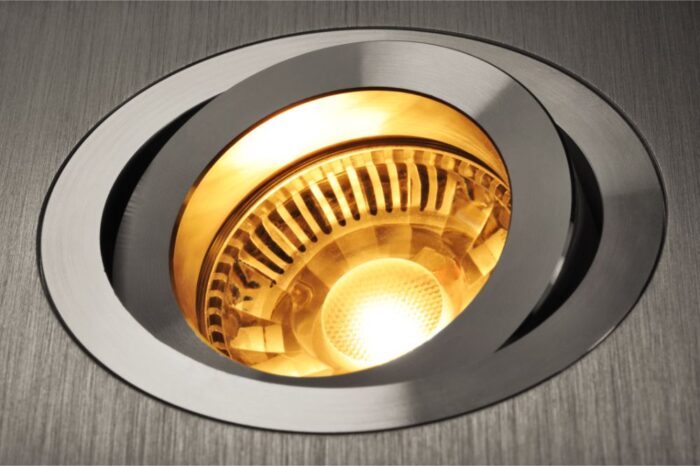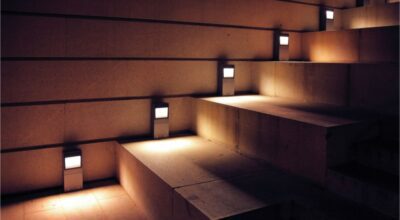COB (Chip On Board) light is a type of LED light. As the name suggests, an array of LED chips is tightly packed together on a substrate, usually silicon carbide. This creates a single LED chip with brilliant lighting. The uniformity of the light enhances the overall brightness, which makes it the perfect choice for professional photographers and filmmakers.
Light Emitting Diodes (LED) are amongst the latest technologies which produce light up to 90% more efficiently than incandescent light bulbs. LED cob lights are much more powerful than DIP LEDs or Dual-In Line Package, which is normally found in the control panel. They indicate whether the switch is on or off. They are cheaper and bulkier and take up more electricity units, which gives them a disadvantage over LED lights.
For an area of the substrate, the amount of COB LEDs you can fit in is far over the number of DIP LEDs you can fit in there. Because of the greater number of lights packed in one space, the uniformity in the brightness will be consistent and is perfect for studios for filmmaking and photography. The smaller the size of the lights packed in the array, the brighter the lights will be.
DIP panel lights often show less uniformity when they are lined up as they give off a zebra pattern with extremely poor panel deformity.
Since COB lights are much simpler than DIP lights, they are more reliable due to their robust design. In a DIP LED light array, every individual light has its own circuit; meanwhile, a COB light consists of only an individual circuit, where the entire COB panel acts as a single light.
Heat Management
While the multiple small LED panels may serve as an advantage to COB lights, they also have their shared cons. A lot of heat is generated, which is localized and requires active and passive heat sinks. For passive cooling, you would need a huge heatsink. The heatsinks surround the front-mounted COB panel in the COB studio lights.
Active heat sinks are installed for cooling, which is done by a fan that is installed inside the light panel. The fan can be problematic for commercial filmmakers; however, it does not pose as troublesome for photographers. In filmmaking, the sound waves may become deformed, which gives a poor result to the overall film. Normally, you wouldn’t need to have a cooling system if only a single COB light is installed; however, if there is a number of COB lights in a single studio, cooling may become necessary. It is wiser to invest in better quality yet expensive COB lights, as the cheaper COB lights come with an average heat management system that makes a lot of noise.

Need For Cob Lights
SMD-LED are quite in these days as well; however, the popularity of COB lights is unmatched as of yet. The reason why many are turning to COB lights is because of the output LUX and power handling capacity of the device. COB lights are known to have increased efficiency as compared to the rest of the LED lighting. The wide-angle projection diverts the light to one area providing superior quality lighting.
Meanwhile, the SMD LED is mounted on a PCB. This ultimately requires an external diffuser which would not support efficient energy consumption.
A COB light is manufactured and designed in a simplistic manner so that the installation process remains easy. The package also comes with large beans/pins. For example, for 5000 lumens lights, we would require a single 10W COB LED instead of 15 1W SMD lights
Advantages
- COB lights have 1.5 times of lumens than SMD lights
- They have high light concentration attributed to multi-diode integration
- They are more compact in their sizes as the light-emitting area is significantly less. This increases lumens per square inch.
- The overall operating temperature of the entire assembly is considerably lower since the installation of the external heat sink is easy.
- A single chip can cover a large area
- It has an overall decreased loss of light. The enhanced clarity in the view attributes to its efficiency.
Disadvantages
- The lighting fixation of the COB chip is difficult to repair. A COB LED light is made up of a single circuit, and if any of the diodes become damaged, it impacts the entire circuit.
- The installation of the heat sink has to be flawless. Improper installation of the heat sink mat results in overheating of the diode chips, which may cause the entire circuit to blow up.
- The device requires constant current and voltage flow. Any fluctuations may result in the diodes becoming damaged. A well-engineered DC source is required to power the COB LED lights for their maximum performance
- It is more expensive than other LED lights.
Where Can COB LED Lights Be Used?
COB LEDs can be used over a range of places. They can be of great advantage if used for household utilities as well as industrial instead of conventional lights.
- The wide-angle beam allows the lights to be extremely useful in large and open places such as a lounge or hallway
- Downlights, streetlights, high-bay lighting
- Large stadiums for night lighting, playgrounds, gardens, etc.
Top Brands Of COB Lights
Mainly, two brands stand out when it comes to COB lights for studios. Their cost covers a range of prices. The first brand is Godox, which makes a variety of COB LEDs with varying output wattage. They are relatively cheaper yet have a superior quality over many other brands. The Godox SL-60 COB light is an excellent choice for high-quality light.
The second brand Apture and their light storm range have the best quality COB LEDs to date. They have a decreased fan noise and are made up of superior quality LEDs. They are a little more expensive than Godox COBs, but the investment is worth its price.
And now you know exactly where to use COB lights to get the most out of their efficiency and benefits!


